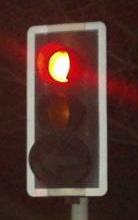I've got a new bike horn for cycle commuting! As far as horns go, It's pretty good - the worlds loudest, at 115db say the manufacturers.
About The Horn:
- Adjustable volume scale from 0% to 100%
- Design now on it's 3rd revision Powered by compressed air.
- Air refilled by normal cycle pump or car tyre pump, (Shrader valve - same as car tyres).
- Operating range of 5psi to 80psi (1 bar to 5.5bar)
- Weight: less than 100g
- Cost £22.
- Up to 115 decibels is pretty darn loud! (For comparison: Front Rows of Rock Concert = 110 dB. Threshold of Pain = 130 dB. Military Jet Takeoff = 140 dB. Instant Perforation of Eardrum = 160 dB!)
No Need
But with 48 miles cycled so far, I haven't had the requirement to blast my horn in anger. Yet. My style of riding is typically very risk-averse, if there is a situation ahead that looks like someone COULD take an action which would be of risk to me, then I am already covering my brakes and expecting the worst.
Although slightly slower than charging everywhere in a sweaty mess, I find this risk-averse approach to cycling generally helps me be involved in less incidents, than if I was risk-ignorant. Trouble is, I haven't had the opportunity to toot my horn yet!
Expected Use
I won't be using this horn for pedestrians, it is far too loud & overpowering. It's use shall be reserved specifically for vehicles. Who, insulated from temperature, ambient sounds and wind, distracted by radios, adverts, music & entertainment, often seem oblivious to everyone other than themselves.
I've no doubt that the horn could very likely be a lifesaver in situations where vehicles take actions without noticing an oncoming cyclist. A forceful reminder of the cyclists presence is definitely useful. That is, if there is time for such luxuaries.
What Does Tooting Accomplish?
But I am already questioning what use it is tooting bad drivers who CHOOSE to take risks, knowingly endangering cyclists; for example - overtaking too close / cutting up / left turning across a cyclist / creeping forward from a side road, hoping to intimidate main road traffic stop / etc.
After all, the purpose of tooting in these cases, would not be a reminder of an innocent (but still life-threatening) driving error or mistake. Tooting at intentionally bad drivers, is most likely going to be interpreted as angry criticism (which it is).
Which accomplishes what? A eureka moment of reflection where these bad drivers suddenly reflect on their years of erroneous decisions putting other people at risk, and make a vow to value other peoples lives as important, rather than obstructions just to be over-taken at all costs? Errm, no. More likely to be just thin justification for some more intimidation, this time road rage probably.
Questions
I mean, I've survived without a horn for several thousand commuting miles already, so I have to ask myself some questions:
- Is this horn necessary? Probably not.
- Am I just being a gadget freak? Probably, yes.
- Is the horn useful? I will find out soon.
Stay tuned, to find out who will be the first to face the wrath of my 115db horn! - And why...
Links:
Airzound Manufacturer's Site (PL)
Buy An Airzound Bike Horn (UK)
Buy An Airzound Bike Horn (USA)
Technorati Tags: Cycling / Bike-Horn / Bad-Drivers / Airzound



